Let’s talk about a wonderful architectural delight: staircases. They are one of the few architectural endeavors that exist to connect two different points in space. It’s purpose is both functional and symbolic. And this is why architects have developed the concept beyond the structural element.
Nowadays, some staircases are on the level of poetry. Maybe even philosophy.
Even though we might be used to intricate designs, the history of stairs dates back to the first human structures, which were most likely hewn logs or flat rocks stacked for easier access to the raised entrances of huts and caves. Civilization moved on and so did the building techniques. By the Middle Ages, spiral stairs had became common in defensive towers; and not much later, palaces and later mansions started featuring more grandiose and ornate stair designs.
Today I bring to your attention 15 beautiful staircases that photographer Philipp Heer and I visited during our European travels. The list is long so I’m dividing this post in three. The staircases were picked based on personal opinion but these designs are so magnificent, different and unique that you will want to visit them all too.
Any favourites? Let me know in the comments below.
Change the Way You Think of Wood: 9 Projects That Will Blow Your Mind
1. Goetheanum by Rudolf Steiner
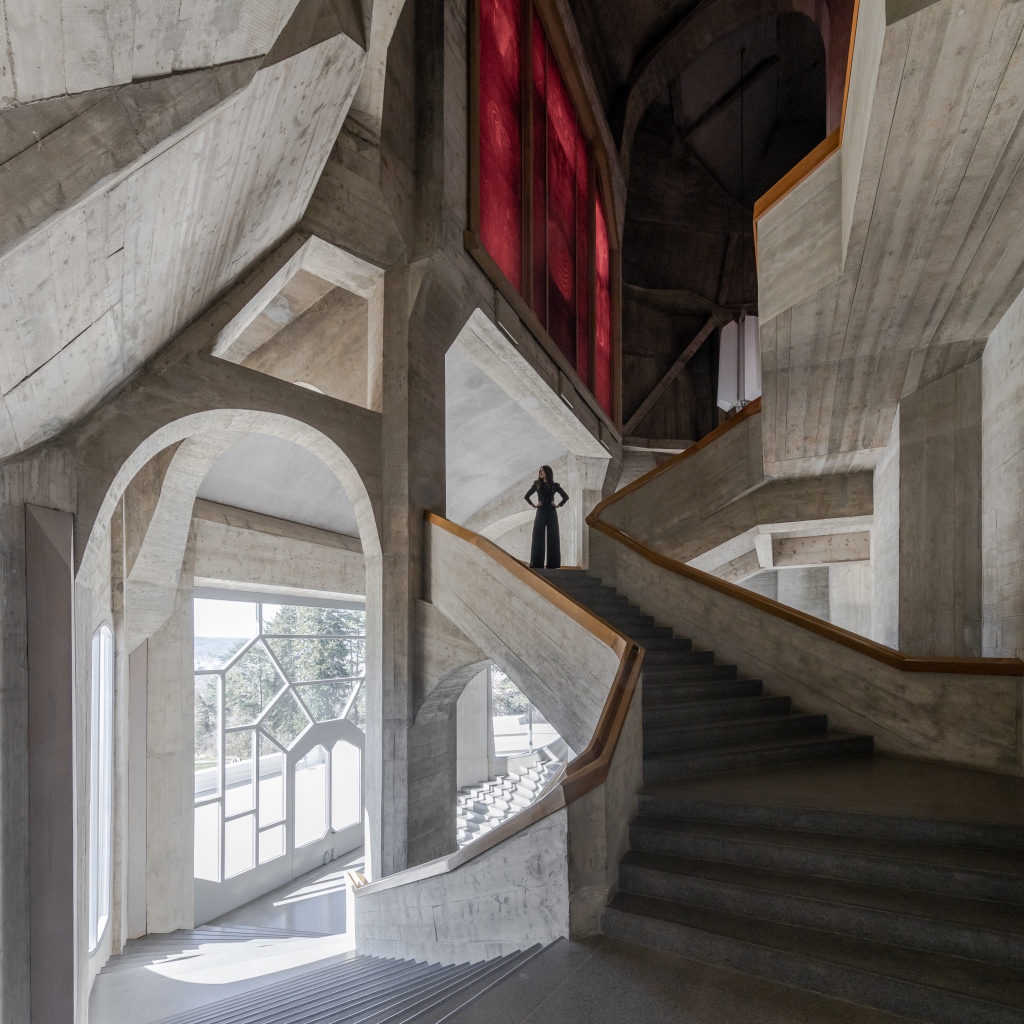
Located in Dornach, a little municipality near Basel, the first Goetheanum (completed in 1925), was burnt down by an unknown detractor. The one you see today was finished in 1928. The exposed concrete (still quite rare in the 20’s), huge and strange interior spaces, the curves and lack of any decoration are some of the features that make this building so impressive. Rudolf Steiner’s architecture is characterized by liberation from traditional architectural constraints, especially through the departure from the right-angle as a basis for the building plan. Read more here.
Location: Rüttiweg 45, 4143 Dornach (Google)
Architect: Rudolf Steiner
Year: 1928
2. Museum Küppersmühle by Herzog & de Meuron

A grain mill was erected in 1860 on the site of the present Museum Küppersmühle by industrialist Wilhelm Vedder, one of the founding fathers of Duisburg’s Inner Harbour. In 1900 the first mill using the most up-to-date technology went into operation in the Inner Harbour, which became known as the ‘bread basket of the Ruhr district’, and in 1908 the earlier buildings were replaced by the three-part structure now housing the museum. The Museum Küppersmühle (MKM), a project by Herzog & de Meuron dating from 1999, was the first milestone in the transformation of the Inner Harbour into an attractive focus of urban life. Since 1999 the Küppersmühle has housed an art museum that contains one of the finest collections of German art from the 1950s to the present. Read more here.
Location: Philosophenweg 55, 47051 Duisburg, Germany (Google Maps)
Architect: Herzog & de Meuron
Year: 2017
3. HIDE by Atmos
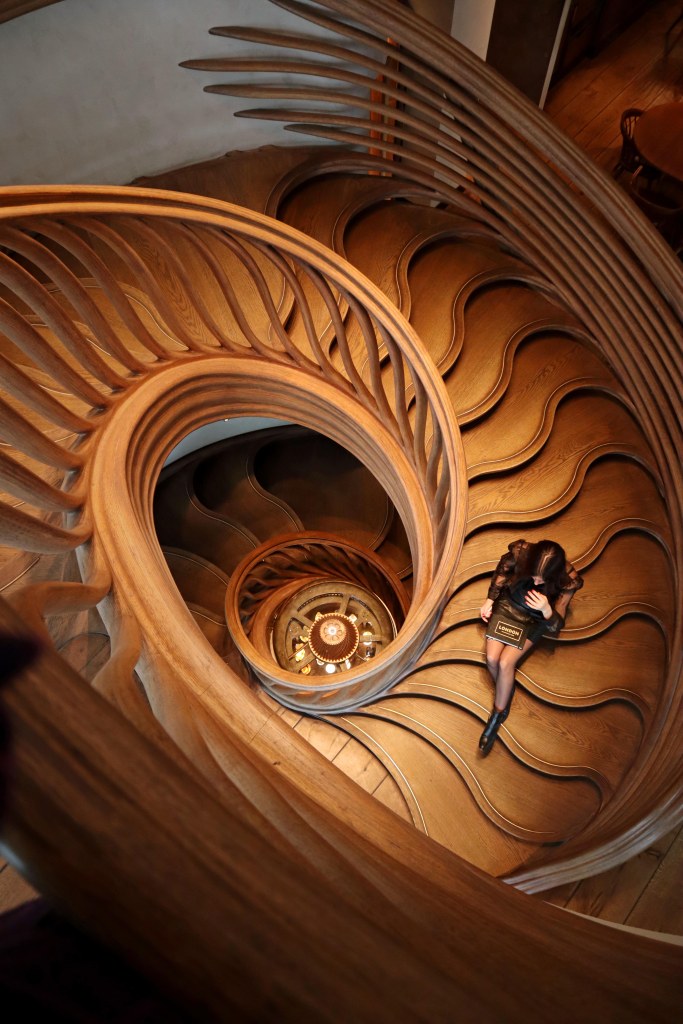
StairStalk is the centrepiece of the Oliver Dabbous’s restaurant HIDE, where it ascends from a basement bar to the dining areas on the ground floor and upper mezzanine. The multidisciplinary practice is known for its organically inspired designs and was chosen to create a statement staircase that appears to grow out of the shadows of the basement level towards the daylight above. The entire stair curls and cantilevers out from a sculptural helical inner stringer – a carefully carved and highly articulated bundle of nature-like fibres which continuously curve and wind upwards through the void, their strands individually unfurling into each upper branch and inner tread. Read more here.
Location: 85 Piccadilly, London W1J 7NB (Google Maps)
Architect: Atmos Studio
Year: 2018
4. Nobis Stockholm by O Eriksson
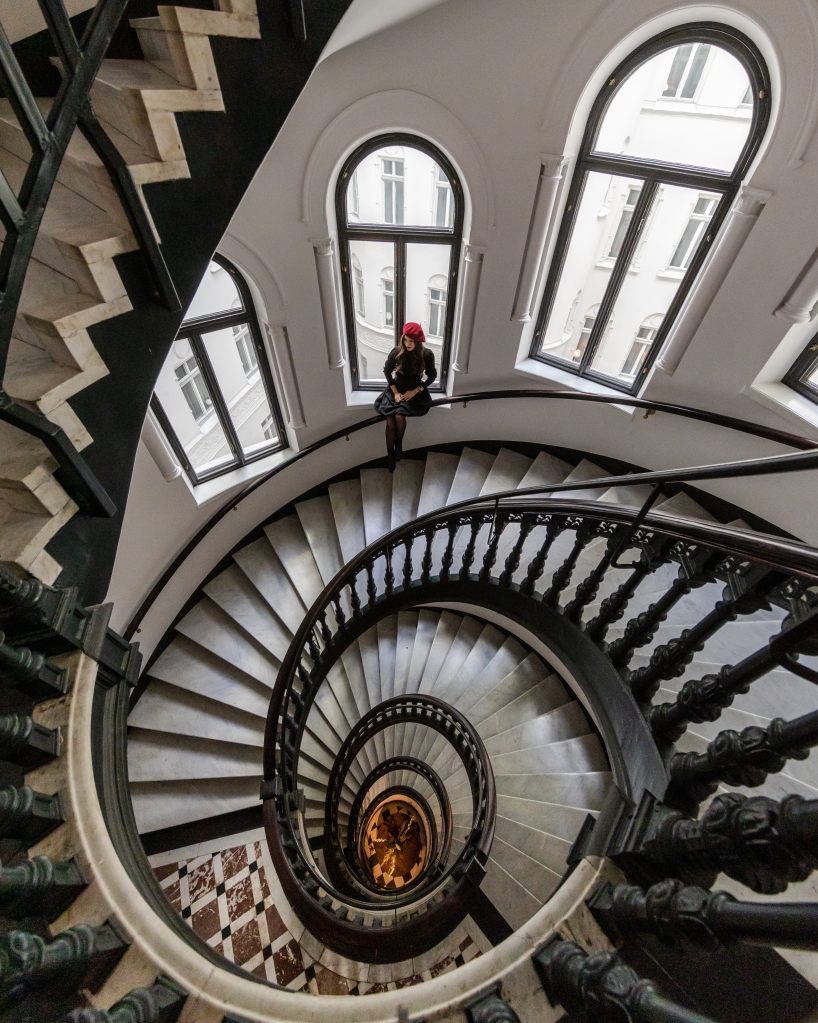
One summer day in August 1973, four people were employed at Kreditbanken in Norrmalmstorg, which today is Nobis Hotel, taken as hostage. The discussed banking drama would thrill Sweden for almost six days. The Nobis Hotel is decorated in a timeless modern and elegant style by the Claesson Koivisto Rune architectural trio. The furnishings contrast effectively with the magnificent, original 19th-century culture-protected original interiors of both buildings, both stunning examples of Stockholm’s unique, high-quality, richly decorated bourgeois stone architecture. Both houses are rich in Stockholm history. Read more here.
Location: Norrmalmstorg 2-4, 111 86 Stockholm, Sweden (Google Maps)
Architect: Claesson Koivisto Rune
Year: 2010
5. Nelson Staircase by William Chambers
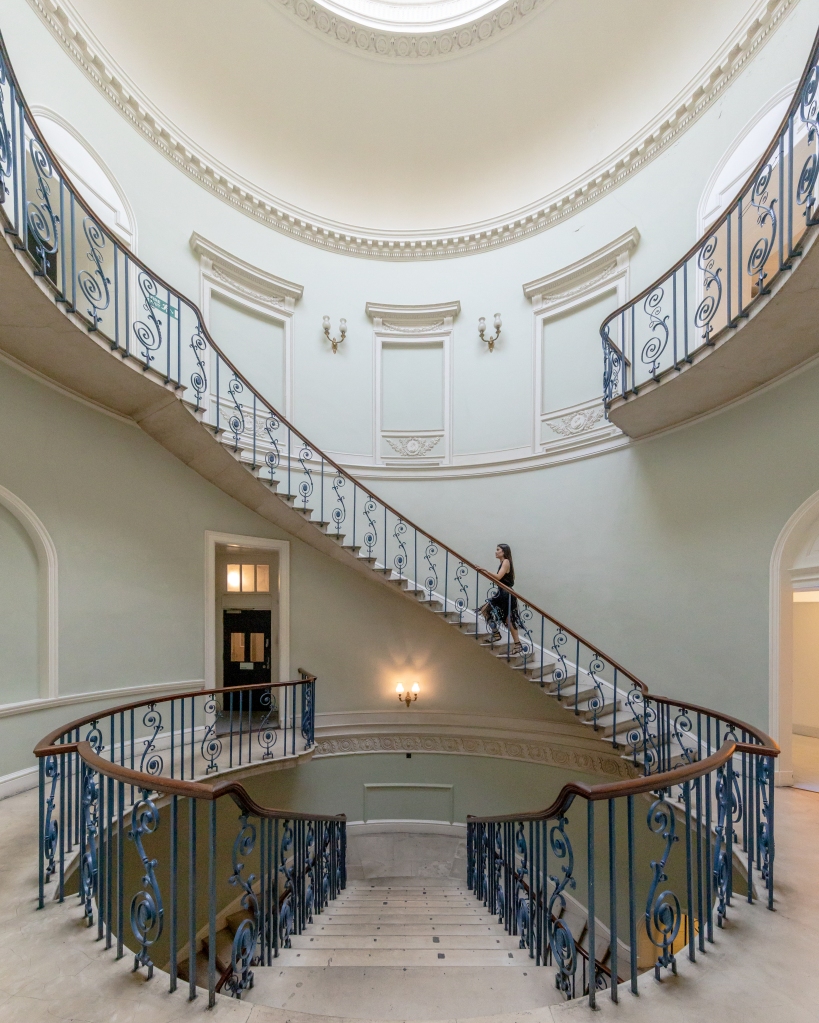
Somerset House is famous for its galleries and the glorious ice rink in winter. However, Nelson stair — the best part — is lesser known. Named after Lord Nelson, who attended meetings at the Navy Boardroom located on the top floor. Set in a rotunda, the flowing Nelson Stair soars from the basement to the Navy Board Rooms and beyond, with plenty of eye-catching flourishes. These five-storey period staircases are free for everyone to visit! Read more here.
Location: Strand, London WC2R 1LA (Google Maps)
Architect: William Chambers
Year: 1795
6. UNESCO-Welterbe Zollverein by OMA

The Ruhr Museum, along with the Visitor Center is located inside the old washing plant of Zeche Zollverein. The office led by Dutch architect Rem Koolhaas was commissioned in 2002 to design the Master Plan of what had once been the Zollverein mine, out of service since 1986 and a World Heritage Site in 2001. People would access to the inside through an escalator going up to 24 meters, the movement from top to bottom has been kept, similar to the flow of the original factory production, reaching a distribution space where the information point, ticketing, cafe, shop and wardrobe are located. Read more here.
Location: Gelsenkirchener Str. 181, 45309 Essen, Germany (Google Maps)
Architect: OMA
Year: 2007
7. Werkraum Warteck pp by Roger Diener
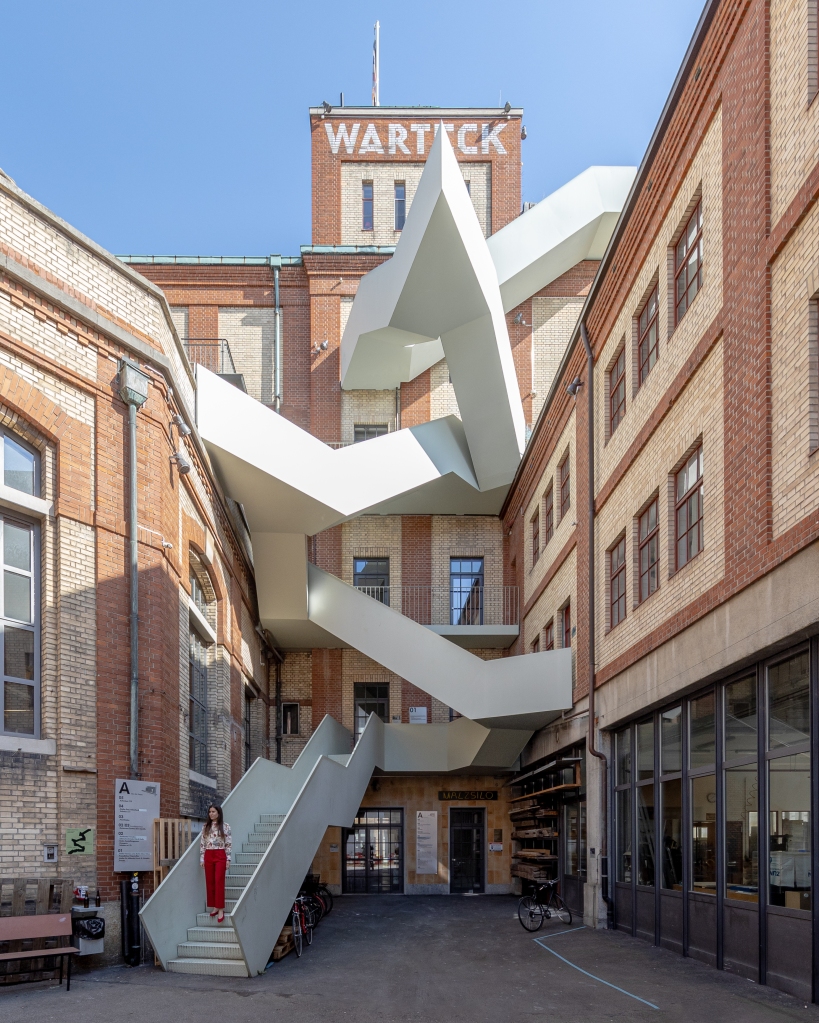
Werkraum Warteck Brewery was originally built in 1891 and later extended by Suter & Burckhardt in 1933. As part of the recent conversion in 2013, a series of public spaces have been created over a total of nine floors. A metal staircase (designed by Stefan Eisele and Fabian Nichele), erected outside the building, provides access for the broader public. The lighting was not only to be designed to guarantee a feeling of safety after dark, but also to render the staircase the focus of attention in the space. The converted Warteck building now offers space for a variety of creative cultural activities and attracts large numbers of visitors, guests and young artists. Read more here.
Location: Burgweg 7, 4058 Basel (Google)
Architect: Fabian Nichele und Stefan Eisele
Year: 2013
8. Canada Water Library by Piers Gough
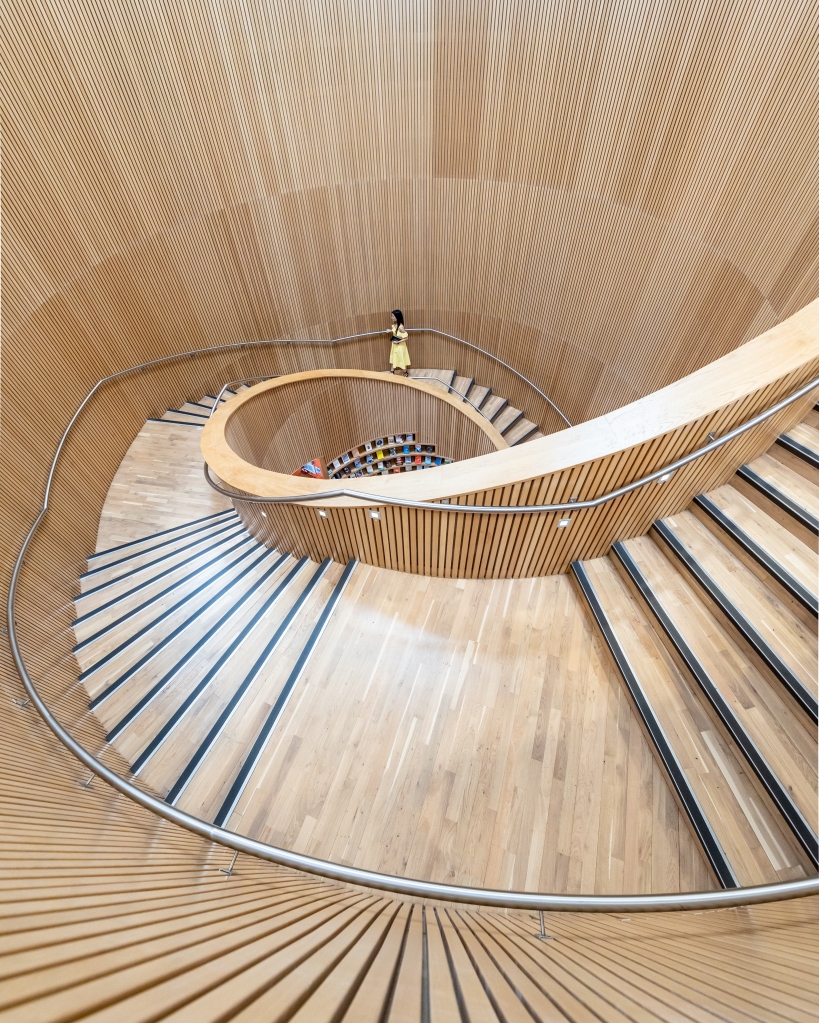
Canada Water is slowly reinventing itself. This library is one of its most recent additions and it’s surprising how quickly has become a kids’ favourite. The stair helps to create a transition between the outside and the world of knowledge — beautiful! The idea of a free standing object in space is quite appropriate for a library, since it is a portal to the discovery of other worlds. As a piece of sculpture, this project binds together a tube station, a stretch of open water and a plaza; and makes the precursor landmark of a substantial new development on London’s Canada Water. Read more here.
Location: 21 Surrey Quays Rd, London SE16 7AR (Google Maps)
Architect: Piers Gough
Year: 2011
9. The Wellem by Felix Dechan
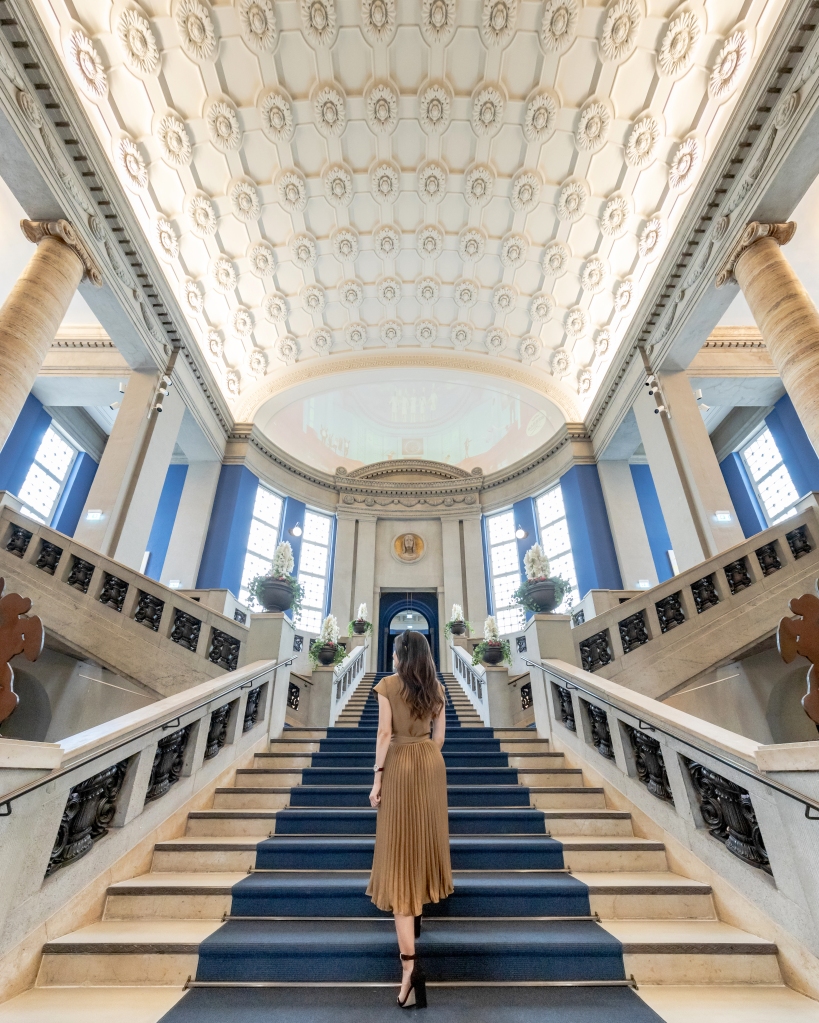
The structure, built in 1913, was originally a courthouse and home to significant historical events of the 20th century. The building shows the monumental construction program of a neo-baroque palace of justice of the Wilhelminism. Four storeys and the hipped roof, on which an oval roof turret is arranged in the middle, rise above a basement. The main facade on Mühlenstrasse shows the symmetrical order of a baroque palace with a central projectile and two side projections. In 2010, the buildings were given up in their original use due to their poor suitability for modern court operations. In 2017 it was transformed into a luxury boutique hotel. Read more here.
Location: Mühlenstraße 34, 40213 Düsseldorf, Germany (Google Maps)
Architect: Felix Dechan
Year: 1913
10. Tate Modern by Herzog & de Meuron
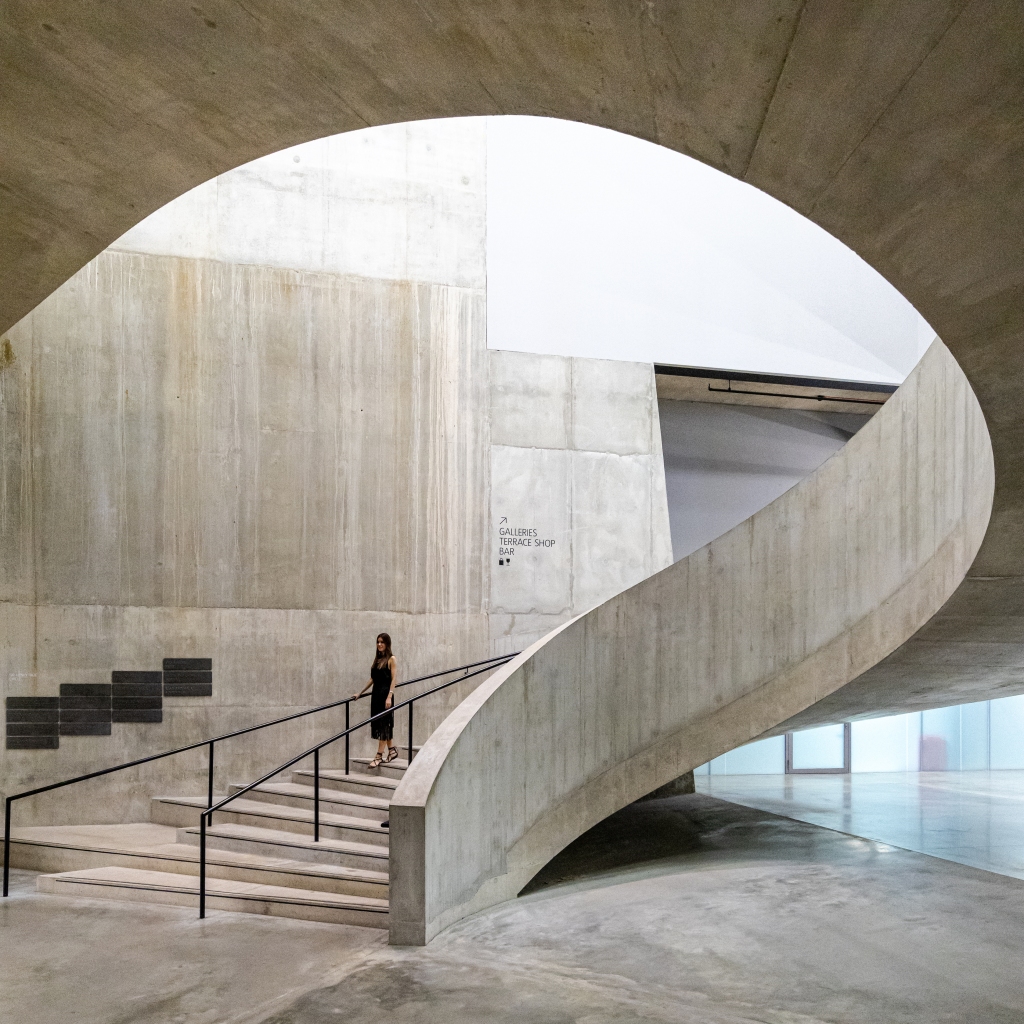
Beneath the Switch House building at Tate Modern – named after the part of the original power station the new building occupies – its oil tanks have reopened as a space for performance art. From this industrial space, visitors ascend into the new gallery space via a curving staircase, which twists up through the floors. Around the building there are small nooks for respite and larger spaces to meet and wait. In these spaces, where padded seats are placed at the windows inviting contemplation, the concrete structure is revealed, cutting a void up though the building’s many levels. Read more here.
Location: Bankside, London SE1 9TG (Google Maps)
Architect: Herzog & de Meuron
Year: 2016
11. Johann Jacobs Museum by Otto Honegger
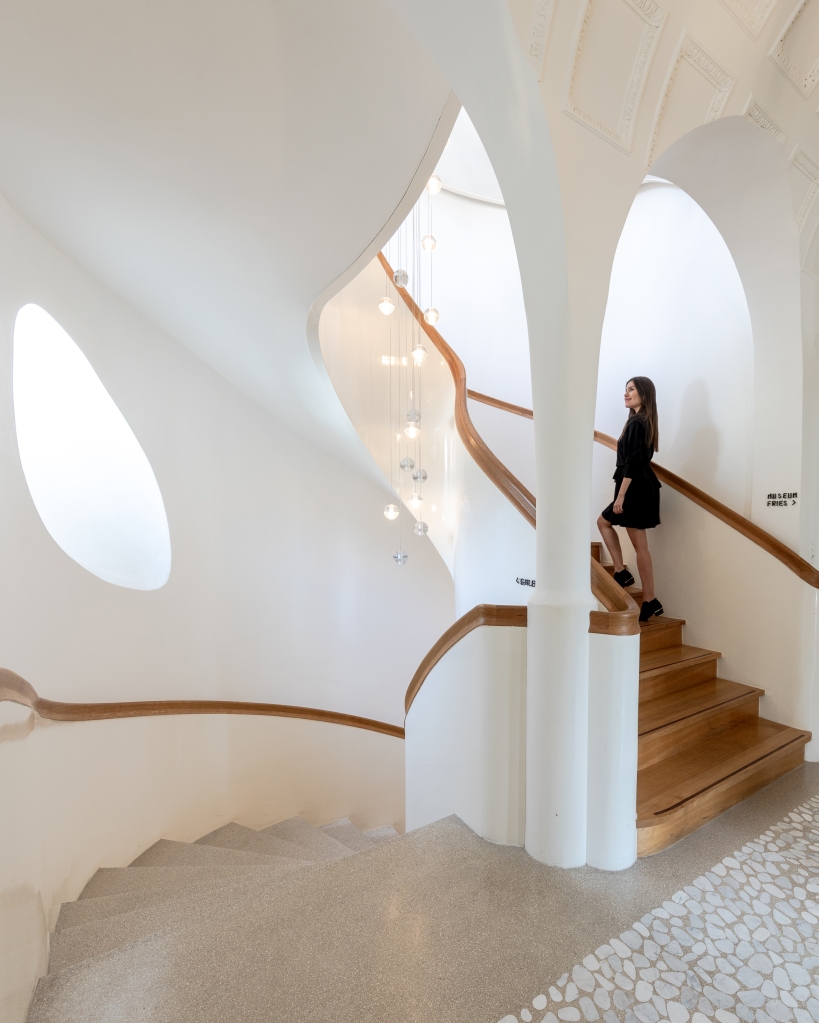
Klaus J. Jacobs, who established the Jacobs Foundation, opened the Jacobs Suchard Museum in 1984 to document the history of the Jacobs coffee empire. Six years later, it was renamed the Johann Jacobs Museum in honor of the company’s founder. Since 2013, the museum has been dedicated to highlighting the turbulent interrelationships that characterize today’s globalized world. Read more here.
Location: Seefeldquai 17, 8034 Zürich, Switzerland (Google Maps)
Architect: Otto Honegger
Year: 1913
12. Crystal Houses by MVRDV
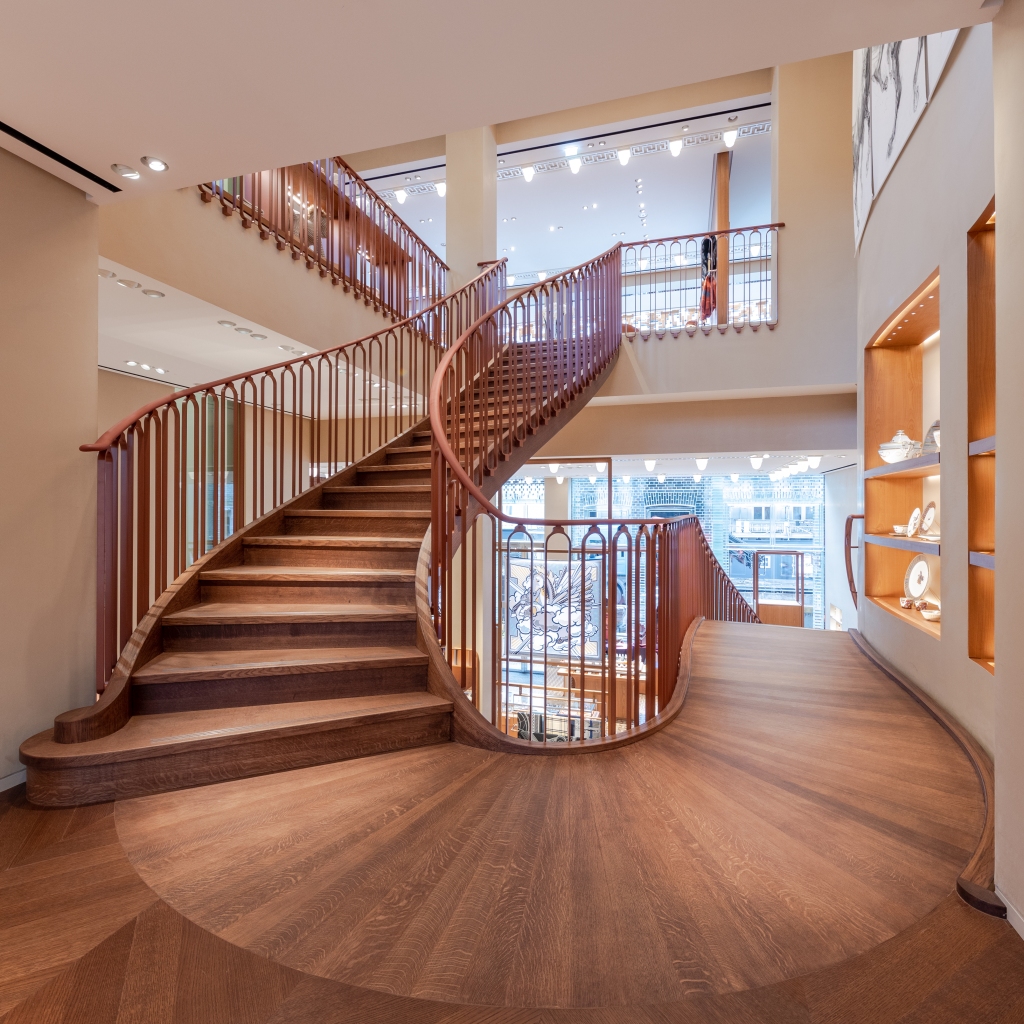
P.C. Hooftstraat, a delightful little street dating mostly to the 19th century, is nowadays known for its high-end flagship stores. In 2016, MVRDV was appointed to revamp this brick block and the result couldn’t be more thoughtful. Using hundreds of specially-engineered glass bricks and a transparent high-strength sealant, the façade was made more permeable whilst still mimicking the original building design and evoking the vernacular aspects of the area. When Hermès moved in earlier in 2019, they further enhanced the space removing a blank wall from behind the upper half of the facade (making the interior entirely visible from the outside) and adding special brand culture touches (like the delicate leather handrails of the main staircase). Read more here.
Location: Pieter Cornelisz Hooftstraat 94, 1071 CC Amsterdam (Google Maps)
Architect: MVRDV
Year: 2016
13. St Pancras Renaissance Hotel by George Gilbert Scott
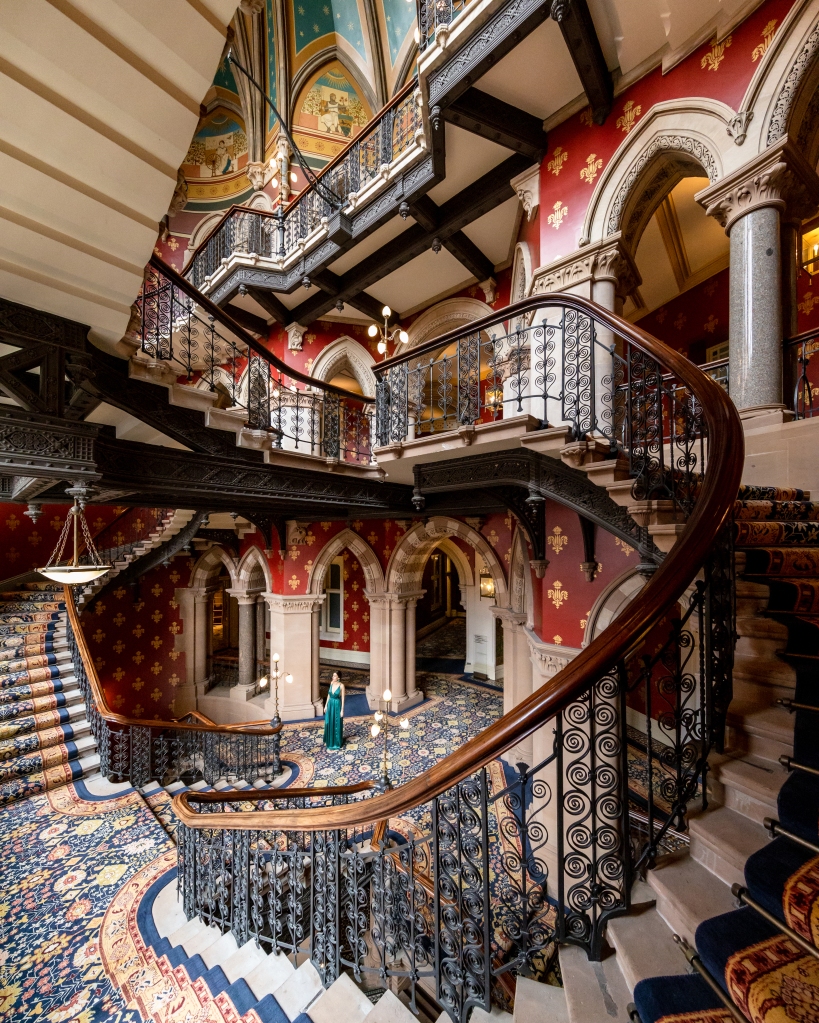
This double staircase was part of the orignial Midland Grand Hotel, designed by George Gilbert Scott, which opened in 1873. It was made extra wide, even by today’s standards, in order to allow ladies to pass by each other in their wide bustle dresses. However, for many millennials, these eye-popping steps are probably most recognisable as the backdrop for the Spice Girls’ Wannabe music video. Read more here.
Location: Euston Rd, London NW1 2AR (Google Maps)
Architect: George Gilbert Scott
Year: 1873
14. Kunstmuseum Basel by Christ & Gantenbein
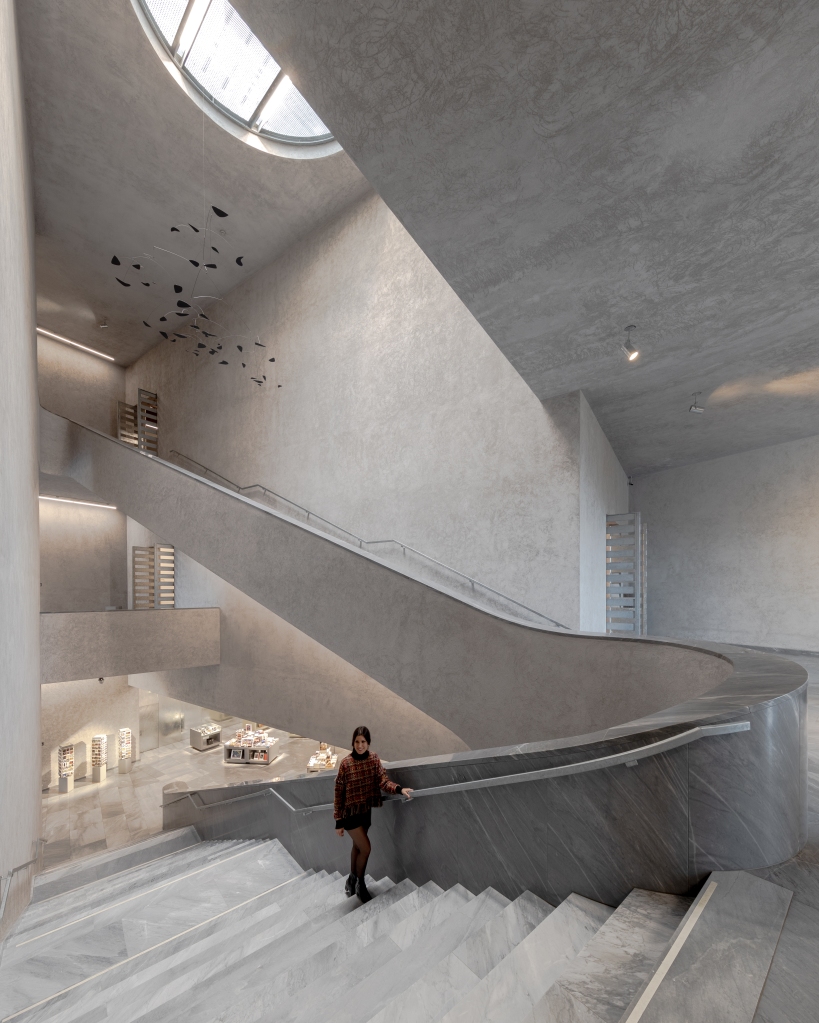
The Kunstmuseum Basel’s new building redefines a prominent location in the heart of the Basel. The new and enlarged museum consists of two buildings that together form a unified presence in the urban space. They are in direct communication with each other across the street that runs between them. The new building’s roofline is leveled with that of the existing structure, so it meets its counterpart on an equal footing; its entrance looks out toward the main building’s arcades, which conversely enjoy an excellent view of its striking façade. The new building’s distinctive inverted corner is a symbolic response to the old Kunstmuseum’s no less distinctive projecting corner. Read more here.
Location: St. Alban-Graben 16, 4051 Basel (Google)
Architect: Christ & Gantenbein
Year: 2016
15. Lloyds Building by Richard Rogers

The internationally-renowned Lloyd’s building was built in 1979 as the home of the insurance institution Lloyd’s of London. Like the Pompidou Centre in Paris the building is a leading example of radical Bowellism architecture in which the services for the building, such as ducts and lifts, are located on the exterior to maximize space in the interior. It consists of three main towers and three service towers around a central, rectangular space. 33,510 cubic meters of concrete, 30,000 square metres of stainless steel cladding and 12,000 square metres of glass were used during the construction. Read more here.
Location: 1 Lime St, London EC3M 7HA (Google Maps)
Architect: Richard Rogers
Year: 1979
Hungry for more?
Connect with me on Twitter, Instagram and LinkedIn or sign up to my weekly newsletter.
Hi Virginia,
thanks for this collection of stare cases. We have seen them all and were especially impressed by Steiner’s architecture of the Goetheanum. We were astonished that you didn’t mention a Bauhaus staircase, neither this in Dessau nor that in Weimar.
Thanks for sharing
The Fab Four of Cley
🙂 🙂 🙂 🙂
LikeLiked by 1 person
Hi Klaus,
Lovely to see you! Ha, that’s an amazing staircase as well. I’ll need to include it in parts 2 or 3 of this series… so many staircases to feature 😉 What did you think of the Goetheanum? I am impressed that you have been to all of these 😱
LikeLiked by 1 person
Hi Virginia
If you compare the old wooden Goetheanum and the modern concrete one there is quite a difference. In Steiner’s time it was surely avantgarde but today it’s much too massive for me. It lacks elegance for my taste. On the other hand, I lived in a student residence build by Hans Scharoun for 3 years and I liked living in a building without right angles.
I prefer the Bauhaus architecture and minimalistic Scandinavian architecture like the buildings of Alvar Aalto. But I am not an architect and I judge architecture following my feelings.
Have a happy week
Klausbermnd 🙂
LikeLike
I have 3 favorites: Goetheanum, Werkraum and Lloyds. Thanks for sharing! Beautiful, meticulously composed, photography as well.
LikeLiked by 1 person
So happy about your favourites. I think Lloyds has to be one of my favourite places on the planet 🙂 Have you been to any of the ones you mentioned?
LikeLike
Pingback: 23 Spots You Shouldn’t Miss in Amsterdam If You Love Architecture | Virginia Duran
Pingback: 12 Sites To Take The Best Skyline Pictures in London | Virginia Duran
Lovely collection. I have shot many of these myself and many more besides from all around Europe over a period of two years. Great fun. You can see some of mine here https://www.flickr.com/photos/barryhoffman/albums/72157684043311812
LikeLike
Wonderful collection!
LikeLiked by 1 person
Thanks Doug!
LikeLike
Pingback: The Free Architecture Guide of North Rhine-Westphalia (PDF) | Virginia Duran
Pingback: The Instagram Hunt: 12 Beautiful Staircases in Hamburg | Virginia Duran
Awesome blog!! Here in Rhode Island, I came across some massive oak hand railings on a massive circular stair case in an old textile mill in Providence. There were wooden studs the whole way down. I thought it was part of the design, but it turns out the Mill owner had them installed to keep the child labor of the time from sliding down the banisters! Nice job. Zulu Delta
LikeLiked by 1 person
Wow that sounds amazing, like a little serendipity discovery. What’s another favourite staircase of yours?
LikeLiked by 1 person
Hi Virginia. I was thinking about your question and some of the cool stairs I have seen…….not to promote my own blog, but I was shocked when “this staircase showed up out of nowhere one afternoon… Zulu Delta
LikeLiked by 1 person
Interesting urban oddity! We need more installations like this 🙂
LikeLiked by 1 person
I’ll keep my eye out…..you do the same! Your blog is great!! DD
LikeLiked by 1 person
Thank you 🙂
LikeLike
Hi Virginia,
I’m looking for part 2 and 3, can’t find them
LikeLike
Hi Ingela, indeed you can’t find them as I haven’t published them yet 🙂 thanks for your interest!
LikeLike
Bonjour Virginie,
grâce à vous j’ai eu le plaisir de visiter et ramener de belles photos de Basel et du Kunstmuseum que je trouve particulièrement esthétique, un bonheur pour les photographes.
LikeLiked by 1 person
Merci Khalis ! Avez-vous visité Basel et le Kunstmuseum ?
LikeLike